Cubism in Australia: Dorrit Black
We have so far only dipped our toes into Cubism with a brief overview, but hopefully enough for you to understand the basic nature of the style, though as the French Cubist painter André Lhote claimed, there are thousands of definitions of cubism, because there are a thousand painters practicing it.
Today we will look at the first in a series of three posts about how Cubism developed in Australia.
Australians know all about having to travel long distances to get to where we want to go both within our own country and to travel to experience first hand what is going on in the rest of the world. Australian artists have been doing this since the days of early settlement - travelling back and forth across the world to learn from those at the coal face of change. It is ironical that as Europeans were migrating south for a better life, their creative children and grandchildren were returning to the homeland to catch up on the latest trends in the world of art. The passion that drove them is exemplified when we remember that the journey back to Europe even in the 1900s took 6-7 weeks by boat.
Over the next few days we are going to look at the works of Dorothea (Dorrit) Foster Black, Grace Crowley and Anne Dangar - all of whom studied in France in the 1920s under Andre Lhote and Albert Gleizes.
You may recall we met recently met Gleizes in the blog. Today we introduce you to Andre Lohte (1885 - 1962), another French contemporary of Braque and Picasso. He was influenced by Gauguin and Cezanne, and worked initially in the Fauvist style. But he is also known as a prolific teacher of the technical theory of art. He taught all over France, as well as in Belgium, England, Italy and from the 1950s, in Egypt and Brazil.
Here is La danse au bar (Gypsy Bar) by Andre Lhote to show you his style.
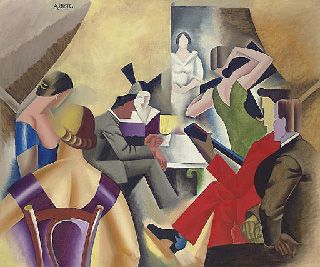
And now a little bit about Dorothy "Dorrit" Black. Adelaide born Dorrit Black (1891-1951) is considered to be one of Australia’s most important modern painters yet is largely unknown. She went to the School of the Arts, Adelaide in 1909, and then in 1915, went to Sydney to study at the Julian Ashton School of Art, before heading off by herself in 1927 to study in London and Paris, which is where she met Andre Lohte and Albert Geizes, among others. She was very taken with the modern style and "the compositional principles of geometric order".
Lhote's subjects were often people, the influence of which is evident in the early cubist work work of Dorrit such as String Quartette (1935) and Double Basses which is one of Anne's favourites. Note the angular shapes and the use of partition lines in Dorrit’s paintings and in Lhote’s.
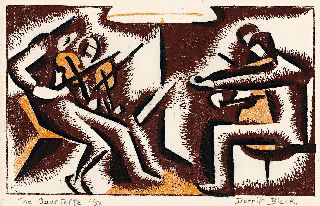
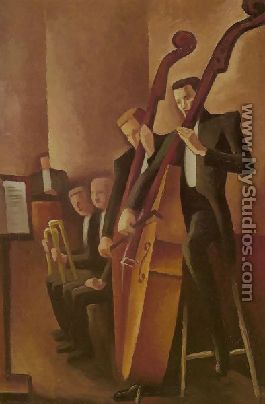
"Dutch Houses," done in about 1929, shows her growing awareness of the cubist style.
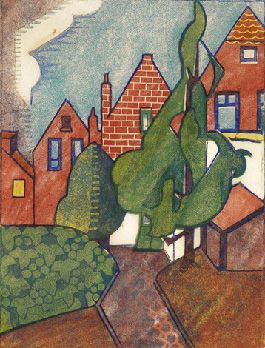
And in Mirmande (with surrounding hills) done in 1934, she is beginning to show more sophistication in composition, shape and palette. Mirmande was where Lhote had his summer school in France.
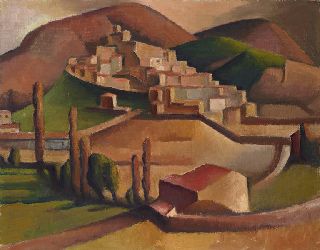
Whilst in London, Dorrit studied with the British linocut printmaker Walter Claude Flight who pioneered and popularised the linoleum cut technique and also painted, illustrated and made wood cuts. Flights’ work is like nothing we have looked at as he was influenced by Cubism, Futurism and Vorticism.
This is Speed c.1922, a linocut by Flight. Even though his lines are bold and the forms very simple, Flight has achieved a feeling of speed and movement. If we look at Dorrit's work below The Acrobats (a linocut) the influence of Flight’s teaching about movement in line is obvious.
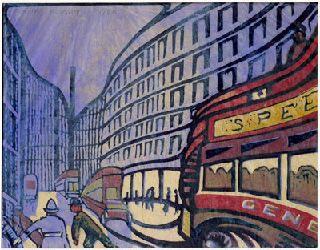
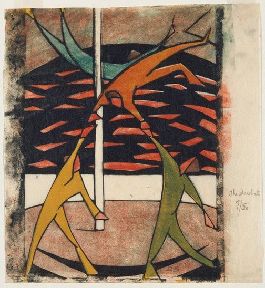
Dorrit sold very few of her works as the public weren’t ready for works in so radical a style.
There can also be no doubt of her incredible talent as a pioneering print maker shown here with Harbour Veere, a linocut on cream woven paper, Paris, 1929.
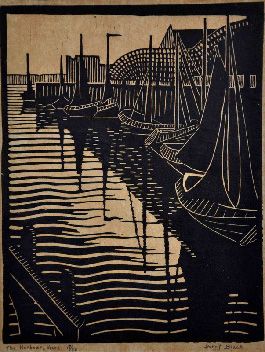
In 1931 Dorrit Black returned home, very inspired to establish the Modern Art Centre in Sydney. It was the first gallery in Australia to focus on modernism. Dorrit’s desire to establish an environment where artists could experiment and move forward in the development of new styles fostered many of Australia’s budding artists.
Dorrit Black lived out the rest of her short life in Adelaide as an inspirational teacher and pioneer of South Australian modernism. Sadly, Dorrit Black was killed in a car accident at the age of only 59. What a huge loss to the art world.......
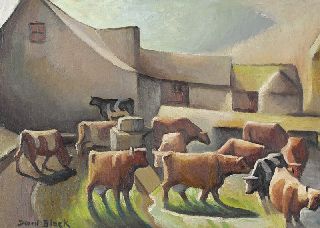
Next in a couple of days we will look at the work of Grace Crowley and then Anne Dangar.

